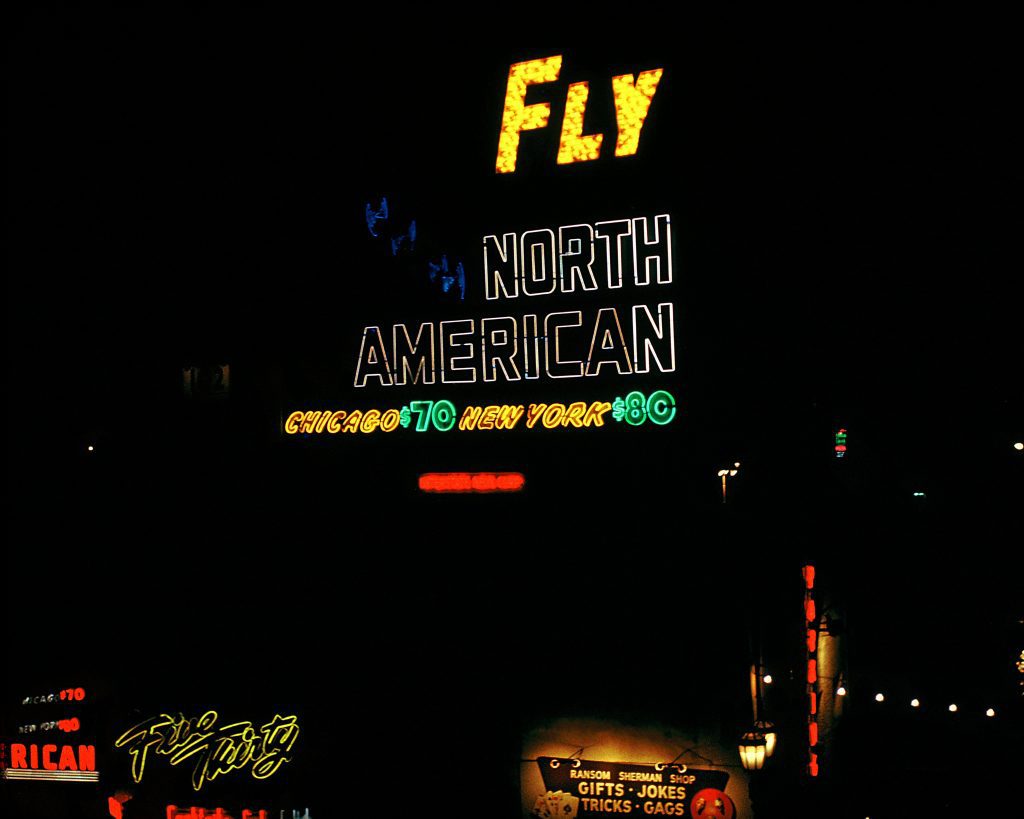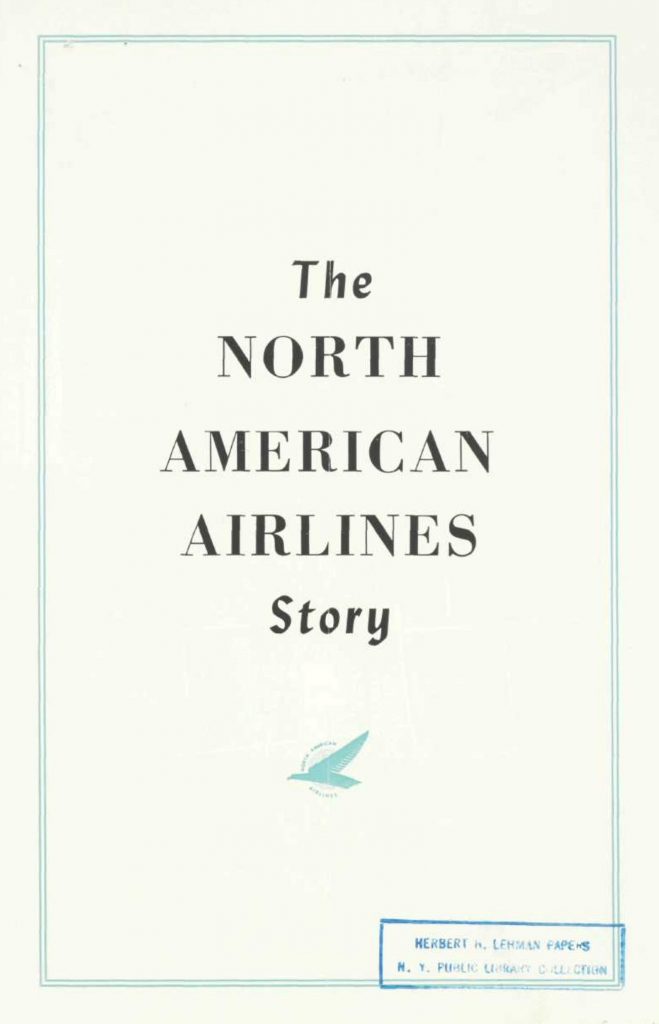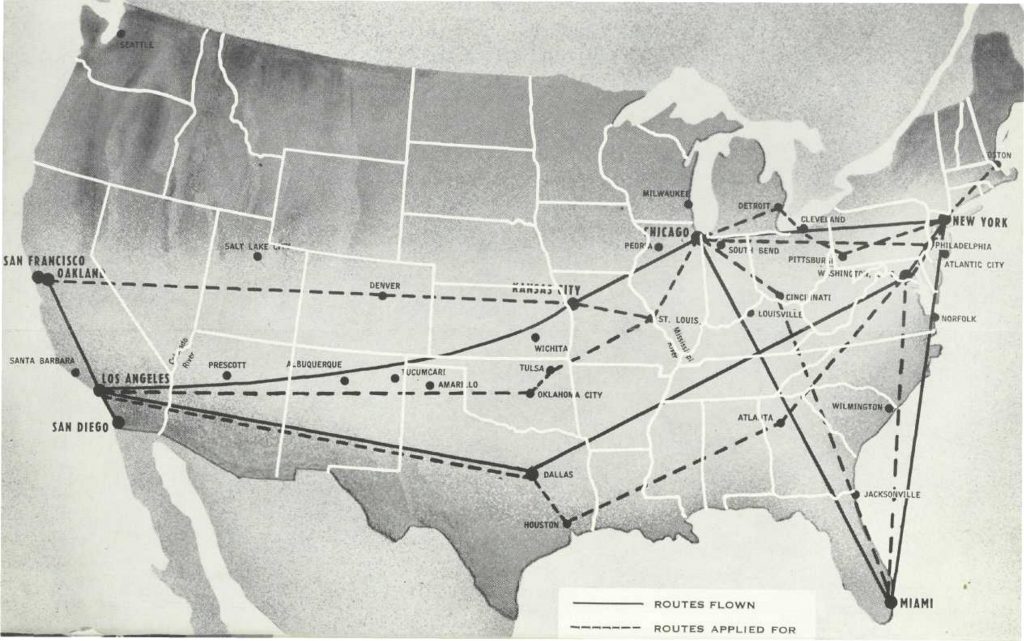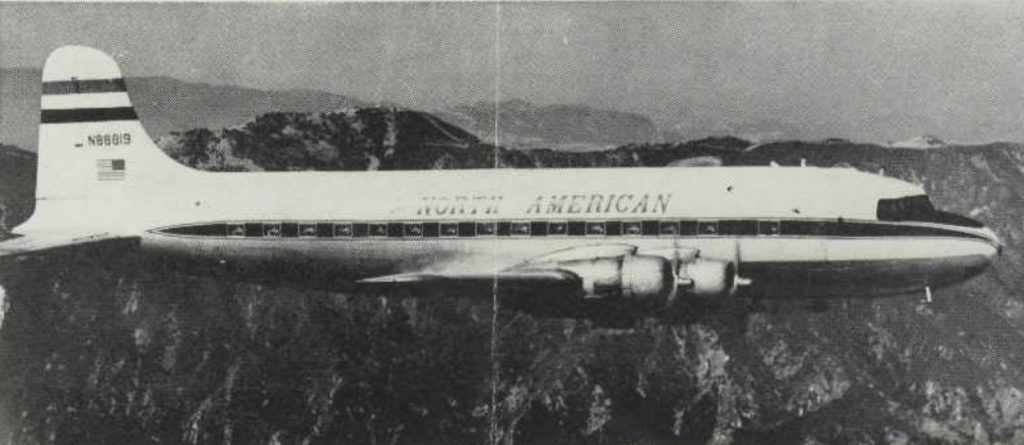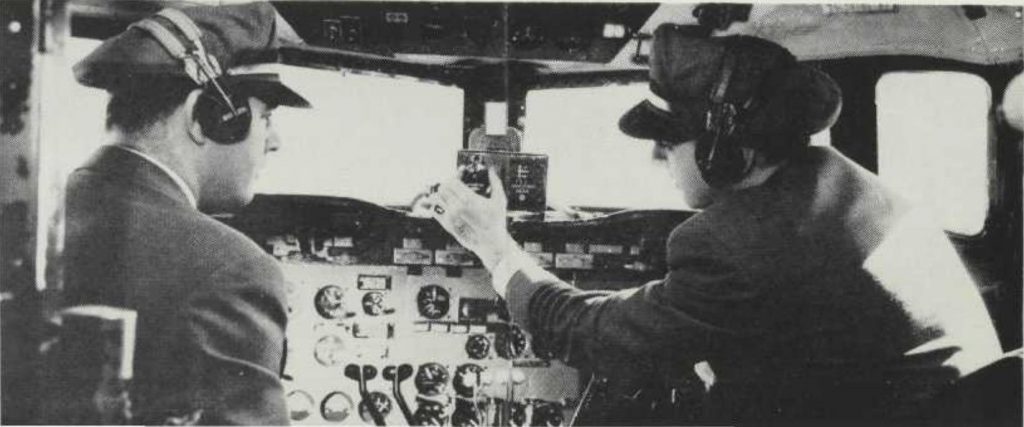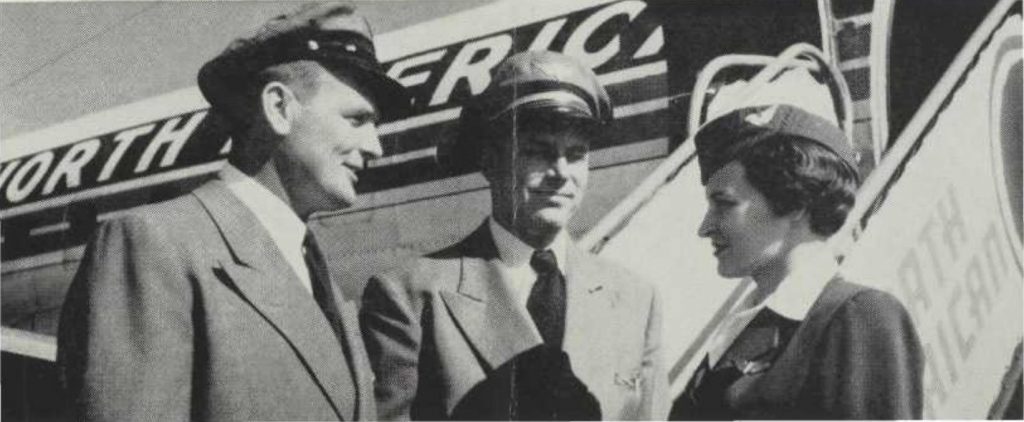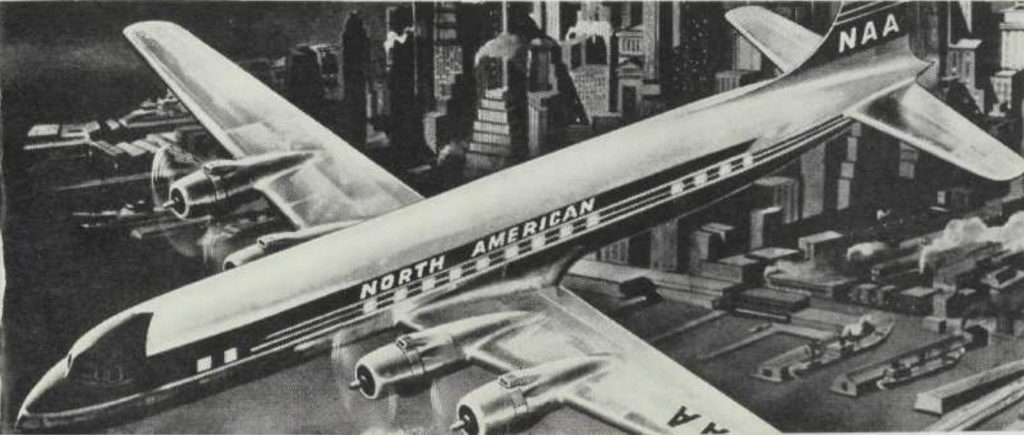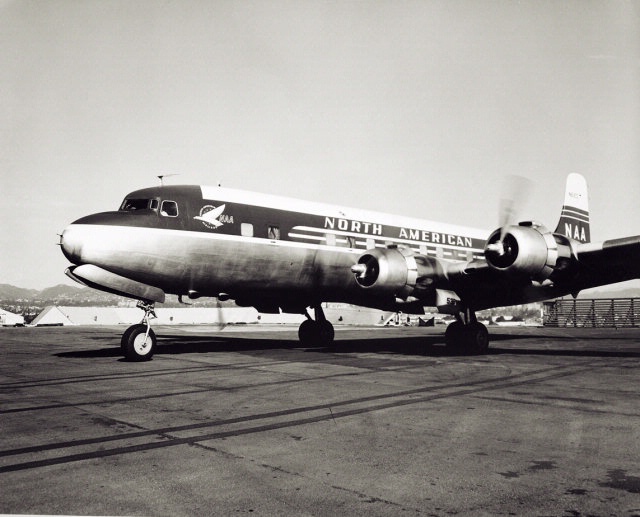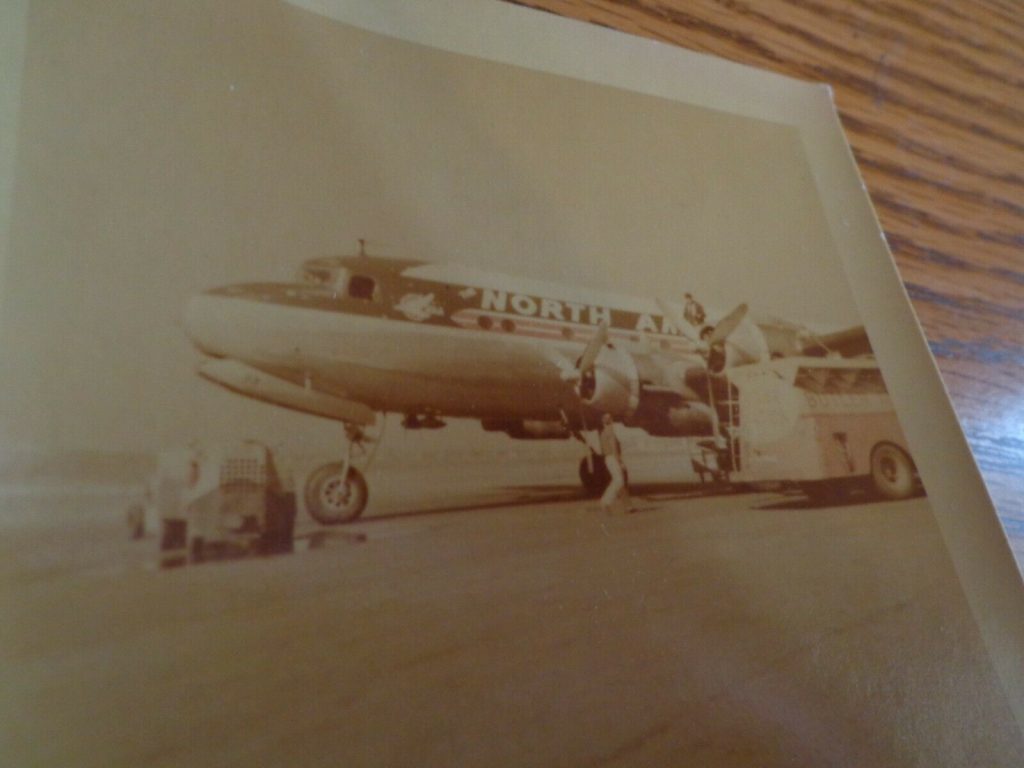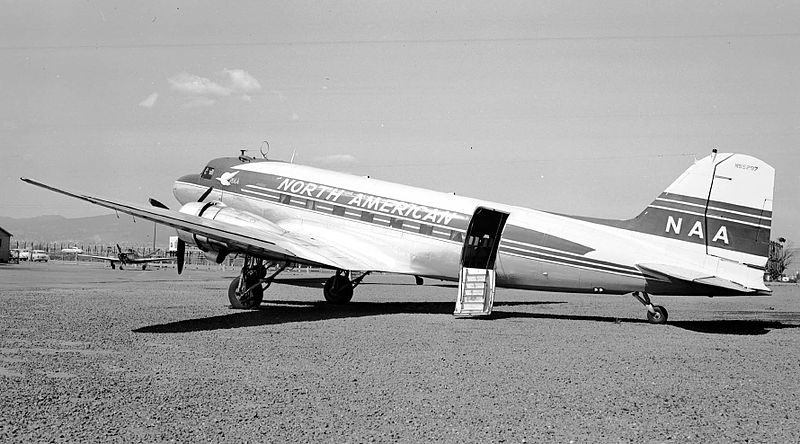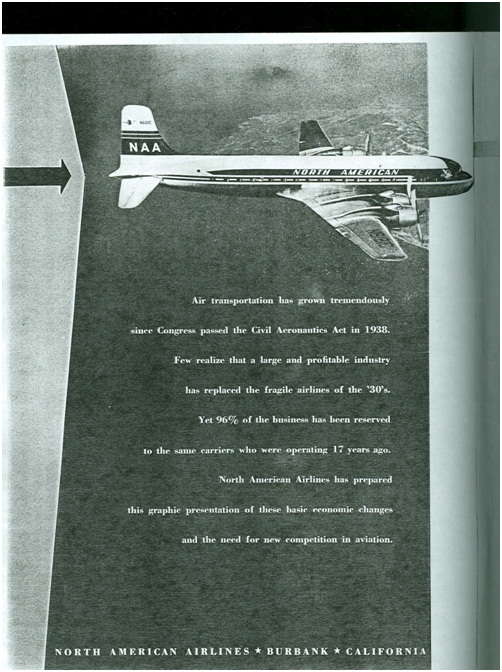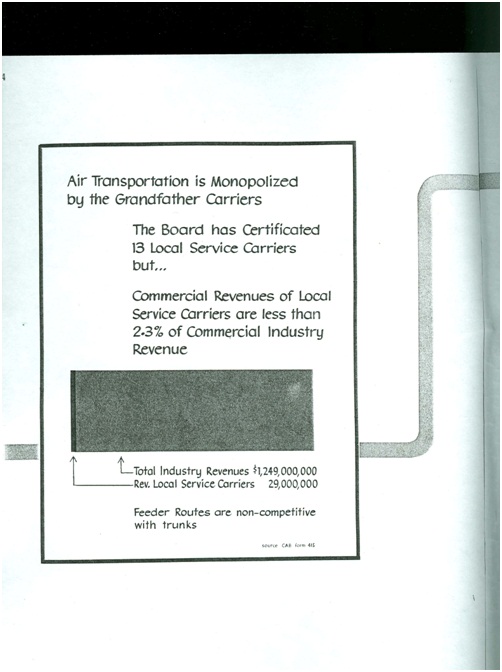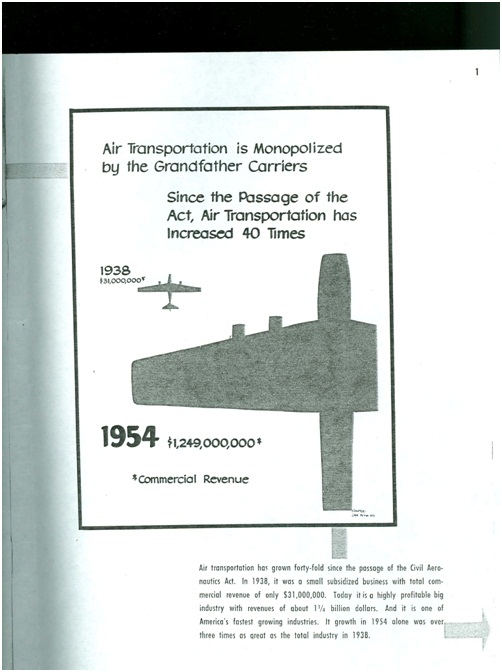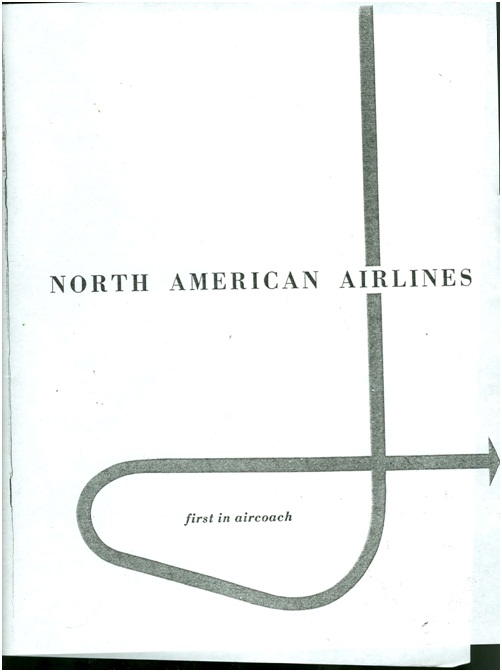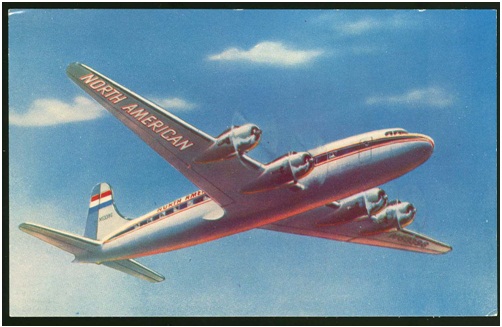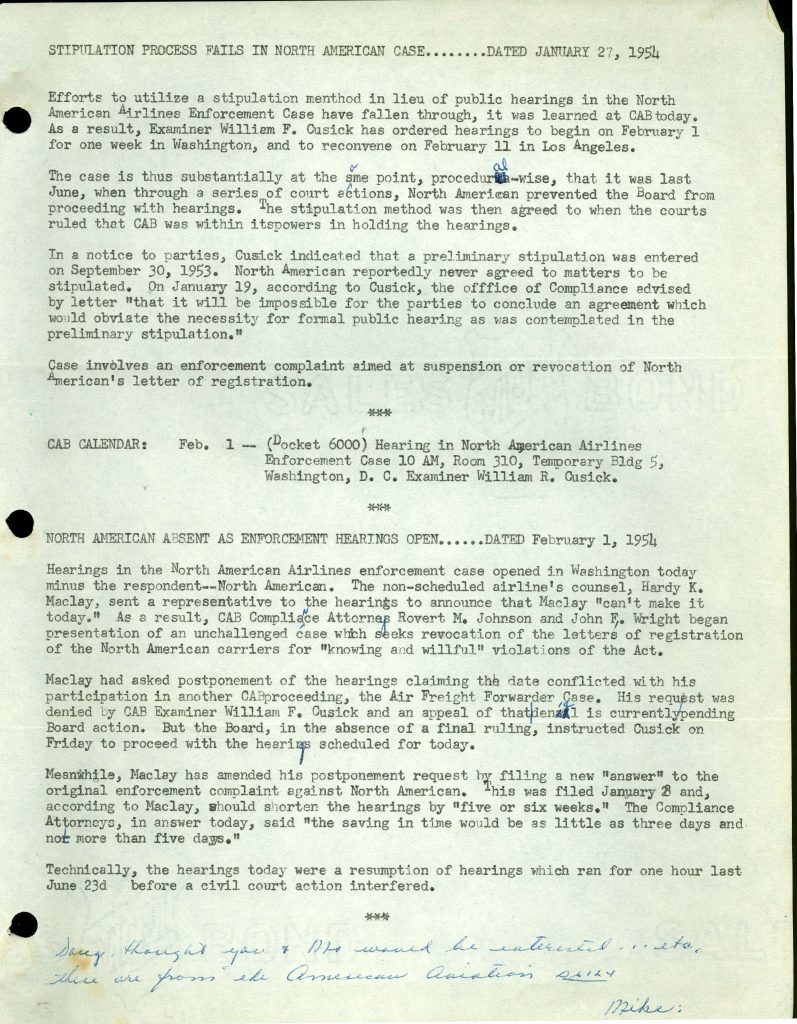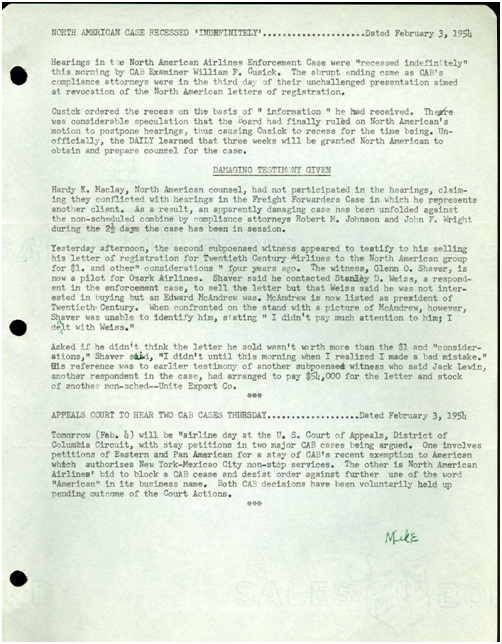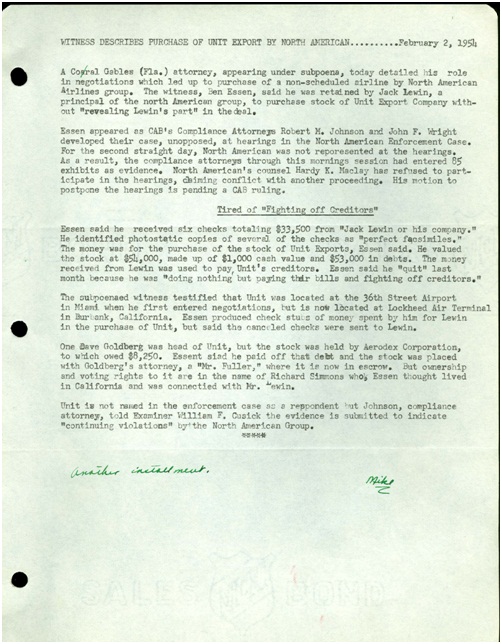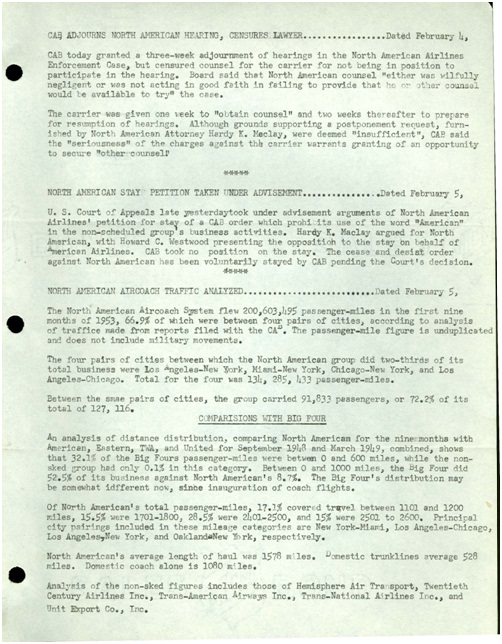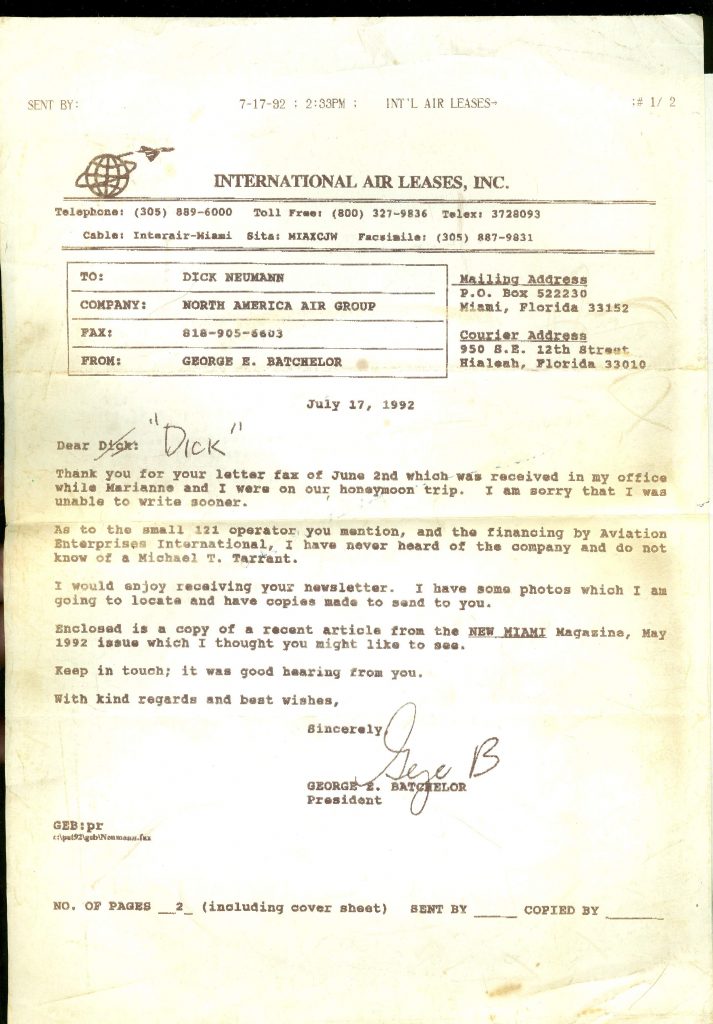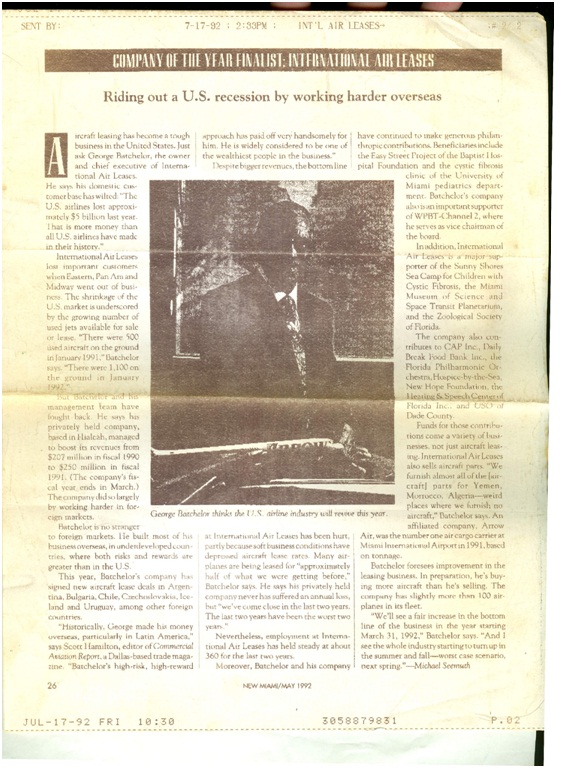1950’s
North American Airlines 1950’s
Please click on each image to view their original size. Use your browsers back (left arrow button) to return to this page.
The growth of North American Airlines is a dramatic success story of the 1950’s. Following World War II, the North American management had an idea for a new kind of air service. Their goal: provide the speed and comfort of air travel at fares within the means of all people.
Management pioneered this new concept of air coach travel without the use of government subsidies. Their belief was the real future in air transportation lay in a market that could be tapped by low fares.
By 1953, the airline had grown from a handful of veterans, to the fifth largest carrier of coach passengers. With a perfect safety record, they flew 285,100,644 revenue passenger miles.
The North American Airlines concept is proven by other airlines having adopted aircoach systems. Until late 1949, none of the large trunk carriers offered aircoach service across the country.
The success of North American has encouraged other carriers to enter the coach field. In 1953 more than 30 percent of all transcontinental passengers flew coach.
Equipment
The North American Airlines group operates a fleet of six four-engine Douglas DC-4 aircraft on is transcontinental and Florida services. The Douglas Skymaster has a long established record for its tried and tested dependability in the air…for its outstanding flight and operational characteristics.
The aircraft are equipped with two automatic radio direction finders, very high frequency radio transmitters and receivers (VHF), Instrument Landing System receivers (ILS), Glide Path Receivers correlated to Ground Control Approach (GCA), and OMNI range receivers.
In April 1952, North American Airlines placed an order with the Douglas Aircraft Company for two DC-6b aircraft. These planes are now on the final assembly line at the Douglas Santa Monica plant. Delivery will be made to North American later this year. The increased speed of these new planes will enable North American to cut its present flight times.
Crew
Outstanding ability, experience and loyalty characterize the men who fly North American Airlines’ fleet of Douglas Skymasters – the Flight Captains and Pilots who have compiled a remarkable record of perfect safety.
After extensive Air Force flying experience, these pilots joined to bring a new concept of commercial aviation – air coach transportation.
Captains and First officers hold not only CAA licenses as Commercial and Instrument Pilots, but also Air Transport Ratings (ATR). This is the highest rating issued by the CAA. Captains have flown over 5,000 hours each.
First Officers and Pilots each have over 2,500 flight hours. The training program is thorough and complete, and it’s constant checking and screening process is as comprehensive.
Maintenance
North American Airlines maintenance standards are high. The maintenance, inspection and overhaul requirements of its aircraft greatly exceed the stringent standards prescribed by the Civil Aeronautics Administration.
Parts of the aircraft are removed, inspected and checked at predetermined, frequent intervals. Skilled technicians are licensed by CAA. Engines are inspected and tested daily. They are removed and completely overhauled at regular intervals.
Operating Authority
All air carriers are required to have certificates of public convenience and necessity, under the Civil Aeronautics Act, . Certificates can be secured after proving public need for proposed services.
No applicant has successfully prosecuted an application for such a certificate authorizing the transportation of passengers over major domestic routes. The Board has authorized carriers to engage in operations by exempting them from the necessity of securing such certificates. Pursuant to this authority, the Board in 1938 authorized non-scheduled operation by non-certified carriers.
The group consists of four non-scheduled carriers operating under that exemption authority and certain amendments more recently adopted. North American Aircoach System, Inc. handles all sales to the public.
The North American group, has applied for certificates in four proceedings. These applications will cost North American in excess of a quarter of a million dollars to prosecute.
Operations have been economically successful, and developed a new air transportation market which has benefited the entire industry. The objective is to have its certificate applications considered by the Board at the earliest possible moment.
North American Airlines will continue to devote its experience and know-how to provide better and more economical air service. It is dedicated to serving the public’s needs within the public’s means.
To established U.S. airlines, North American Airlines is neither swan nor goose but an unloved and awkward swoose. Technically a nonscheduled operator under CAB rules calling for “irregular” and “infrequent” flights, it has nevertheless grown into a $9,000,000 outfit operating one of the biggest transcontinental air-coach services.
Last week, with North American’s 1954 sales topping $11 million, the CAB decided to clip the big hybrid’s wings. A CAB examiner recommended that North American be grounded for operating a scheduled airline in violation of CAB regulations.
Battles & Coaches. The trouble was nothing new for North American’s four Los Angeles co-owners—Stanley Weiss, 43, James Fischgrund, 39, Ross R. Hart, 40, and Jack B. Lewin, 42. Separately and together, they have been fighting CAB for years. Returning from the war, Fischgrund, a Navy lieutenant commander, and Weiss, an ex-Air Corps transport pilot, bought two war-surplus Douglas C-47 transports for $15,000 down, and formed Standard Airlines.
Hart and Lewin. two Douglas Aircraft employees, formed their own Viking Airlines with the money raised from 29 coworkers. The two lines pioneered cut-rate air-coach flights. By 1948 they had 80% of the transcontinental air-coach business sewed up between them.
This was too successful both for CAB and the big scheduled airlines. Charging that the lines flew too regularly and too often, CAB put them out of business. The four-man team of flyers promptly organized North American as a series of interlocking companies to get around the rules.
First they formed Republic Air Coach System to handle the financial end, then bought up four small nonscheduled lines with valid CAB letters of registration—Twentieth Century Air Lines. Trans National Airlines, Trans American Airways, Hemisphere Air Transport—to supply planes and pilots.
North American itself, though its name is on all planes, acted merely as a ticket agency. With that setup, Fischgrund, Weiss & Co. started maneuvering their four “flying companies” to operate what amounted to a regular scheduled airline.
Though no one company ever flew at the same time each day, the four combined could put together a solid, round-the-clock schedule by jockeying their flights back and forth.
“Perfect Safety.” The CAB took out after North American almost as soon as it started. But by one legal dodge after another, the line has managed to keep going. And it has turned into a whopping success. It started the first $99 fare coast to coast, expanded its air-coach business so fast that it forced the scheduled lines to start air-coach flights (today 34% of all airline travel is by air coach).
North American made enough money to buy two Douglas DC-6Bs for nonstop transcontinental flights, has three more on order, and has been able to chop its coast-to-coast fare to $75 one way. The line can also boast proudly in its ads that it has flown “1 billion passenger-miles without an accident—A perfect safety record.”
North American, which will keep on flying while it files an appeal before the full board, makes no bones about its determination to force its way into the exclusive circle of scheduled airlines. The line argues that CAB doctrine since the board was first set up in 1938 has been to limit the number of trunk airlines to the 16 “grandfather” lines (American. Eastern, United, T.W.A., etc.) operating at that time.
Since then, three have dropped out, but no new names have been added to the roster, though 27 small feeder services have been authorized. Instead of expanding existing airlines to fill all U.S. needs, North American wants the CAB to let it provide new service and competition.
NAA Case 1/27/1954
At the end of the 1950s, airlines were bringing a new level of speed, comfort, and efficiency to the public. As flying became more common the air travel experience began to change.
With the steady increase in passenger traffic, the level of personal service decreased. Stresses of air travel began to replace the thrill. Flying was no longer a novelty nor an adventure; it was becoming a necessity.

